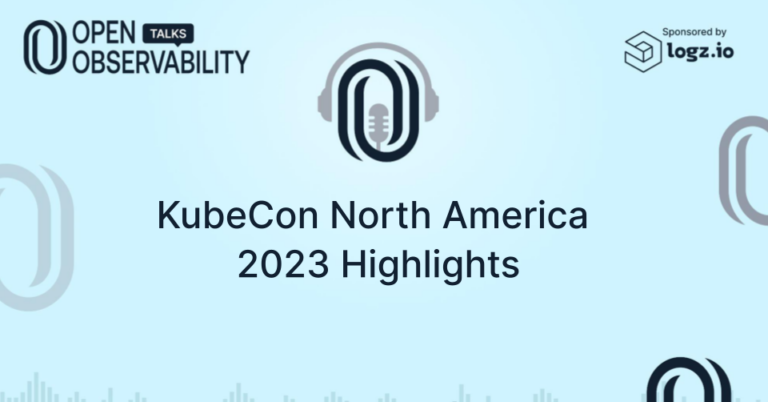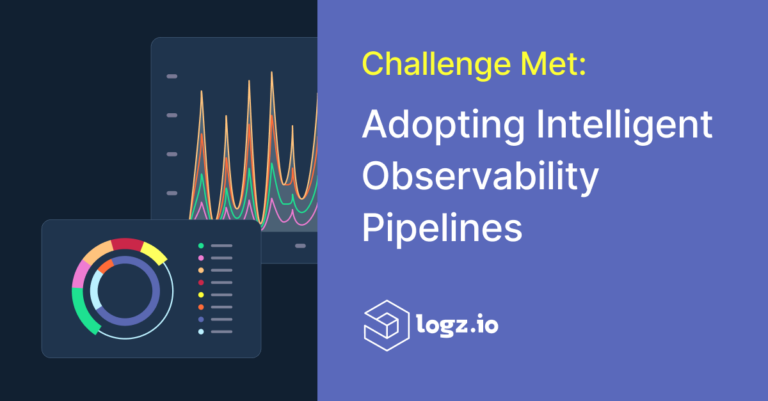
Navigating Observability Trends in 2024: Strategies for Success
December 19, 2023

For businesses reliant on customers’ positive digital experiences to achieve their goals, the seamless operation of cloud applications and infrastructure is paramount for financial success.
Observability holds a pivotal role in modern enterprises, offering critical insights into your IT system’s health and performance.
However, persistent issues of complexity and high costs have plagued the observability landscape. In 2024, we believe a few specific challenges will be particularly pervasive, and we’re here to share how you can address them.
Before we delve into that, we’d like to ask your help as we shape our vision for observability and get a sense of the industry on a number of pressing topics.
We’re gathering responses for our 2024 Observability Pulse survey and want to hear from ITOps, DevOps, SREs and CTO/CIO-level professionals such as yourself on issues including those detailed below.
Please fill out the survey here so you can contribute to this important research!
Without further ado, onto our 2024 observability trends.
The Impact of Infrastructure Complexity on MTTR
The Mean Time To Recovery (MTTR) for production issues has seen a gradual increase. The number of respondents to our Pulse survey who said it took multiple hours to resolve production issues rose from 41% in 2021 to 64% in 2022 and hit a whopping 73% in 2023. It’s a major issue that’s getting worse in spite of the numerous tools at the disposal of most organizations.
It’s undoubtedly getting worse thanks to escalating system complexity, especially with technologies like Kubernetes, serverless and other popular but ephemeral cloud-native practices.
To counter this, organizations should seek observability solutions leveraging AI to expedite troubleshooting. AI can simplify data pipelines, effectively prioritize alerts, and provide crowdsourced insights for faster issue resolution.
While AI has become a staple of most vendors’ marketing pitches, and certainly suffers from a great deal of hype, we contend that marrying available generative AI feeds with proven capabilities for analysis and troubleshooting will have a huge impact. From the added context they can provide on common issues, to increased use of LLMs to advance querying capabilities, we see this as a huge part of the future of observability.
Hone in on tools that will help you remediate issues with both speed and accuracy.
Escalating Costs with Data Explosion
Running cloud-native applications on multi-cloud, multi-region architectures results in a surge of observability data, leading to increased observability costs. Most organizations aren’t equipped with the resources—technological, human and monetary—to deal with all this data and the associated costs.
Smart data collection and hygiene can combat this observability bloat. It’s simply not necessary to collect and store all of the data that’s produced by an organization. You can declutter your environment, and save money and headaches in the process.
This is where advanced observability pipeline analytics can play a huge role, most often using (you guessed) available AI and machine learning capabilities to understand what data is most critical to ongoing monitoring and investigation. Less valuable data can be deprioritized and sent to cold storage, or even dropped from the system.
Observability solutions should assist in filtering unnecessary data, thus reducing costs and enabling the migration of less critical data to more economical storage repositories.
Convergence of Security and Observability
An emerging trend in the world of observability is the need for shared visibility into key enabling apps and IT infrastructure technologies from both operational and security perspectives. And this doesn’t just mean running security analytics against existing logs.
One key example of this need relates to securing Kubernetes environments. There’s a shared interest across most organizations in ensuring Kubernetes works from both performance and security perspectives.
By this logic, security merits integration into the traditional observability stack of logs, metrics, and traces. That’s why more companies are exploring practices to achieve shared visibility across observability and security signals in a single platform, or building tighter integrations through automated workflows.
While DevSecOps still remains a nascent field, we do see numerous teams building a centralized strategy, and unified processes for end-to-end K8s observability.
Moving Ever Forward
As we approach 2024, observability challenges are escalating with the increasing complexity of applications and infrastructure.
The strategy for observability businesses should revolve around troubleshooting faster, reducing costs, and providing mutual visibility to support both operational and security objectives.
By embracing solutions that leverage AI, optimize data storage, and seamlessly integrate security, organizations can navigate these trends and ensure the continued effectiveness of their observability practices.
Our strategy is to keep providing value for our customers around their observability needs. 2023 was a massive year for Logz.io as we added numerous features to our Open 360™ platform.
Some of these include Cold Tier for optimized storage, numerous enhancements to Kubernetes 360, and our latest, App 360—an alternative to traditional, costly and difficult-to-manage APM.
If you’d like to see how Logz.io can help you meet observability challenges in 2024 and beyond, sign up for a free trial of the Open 360 Observability Platform today.




